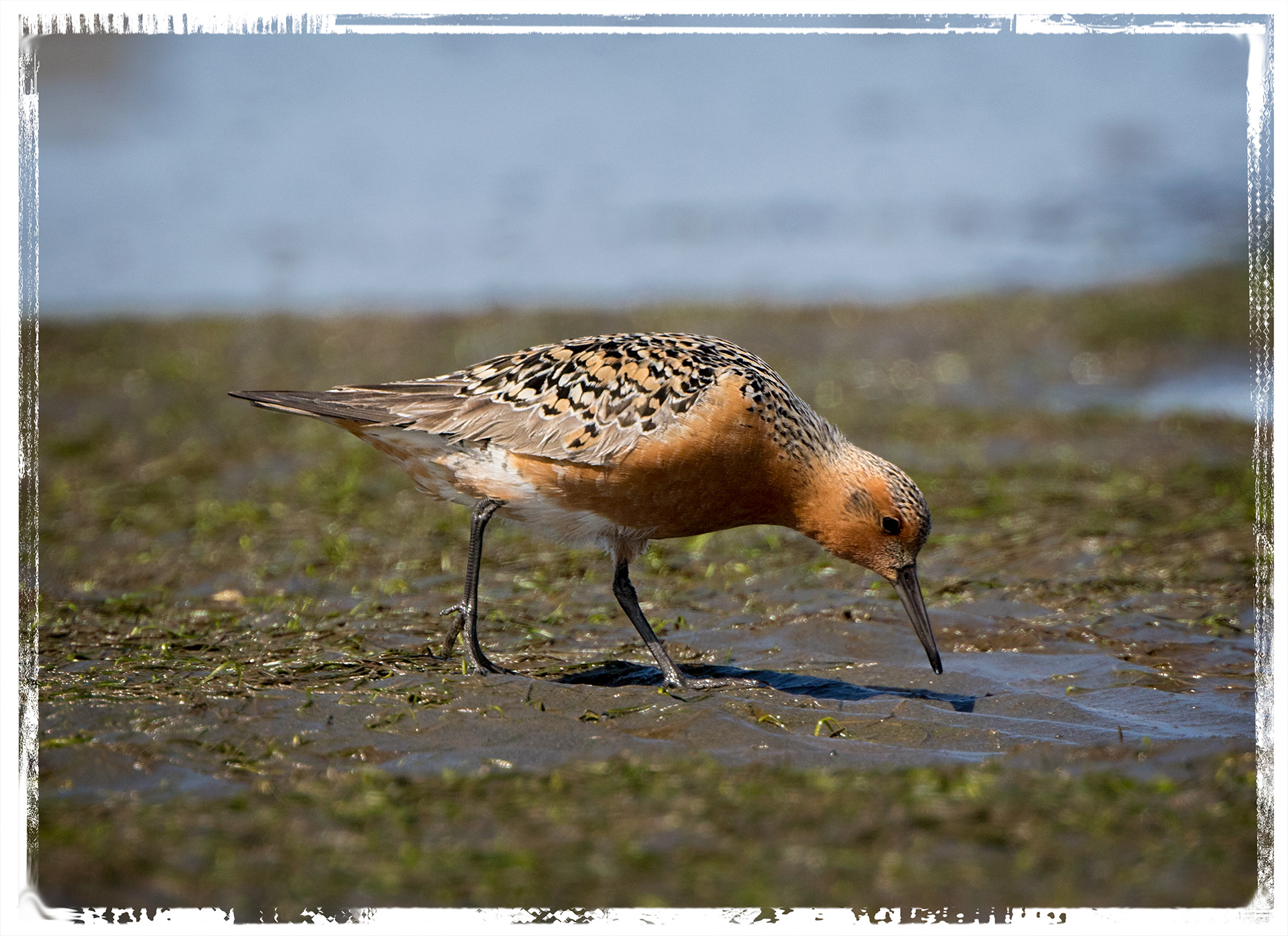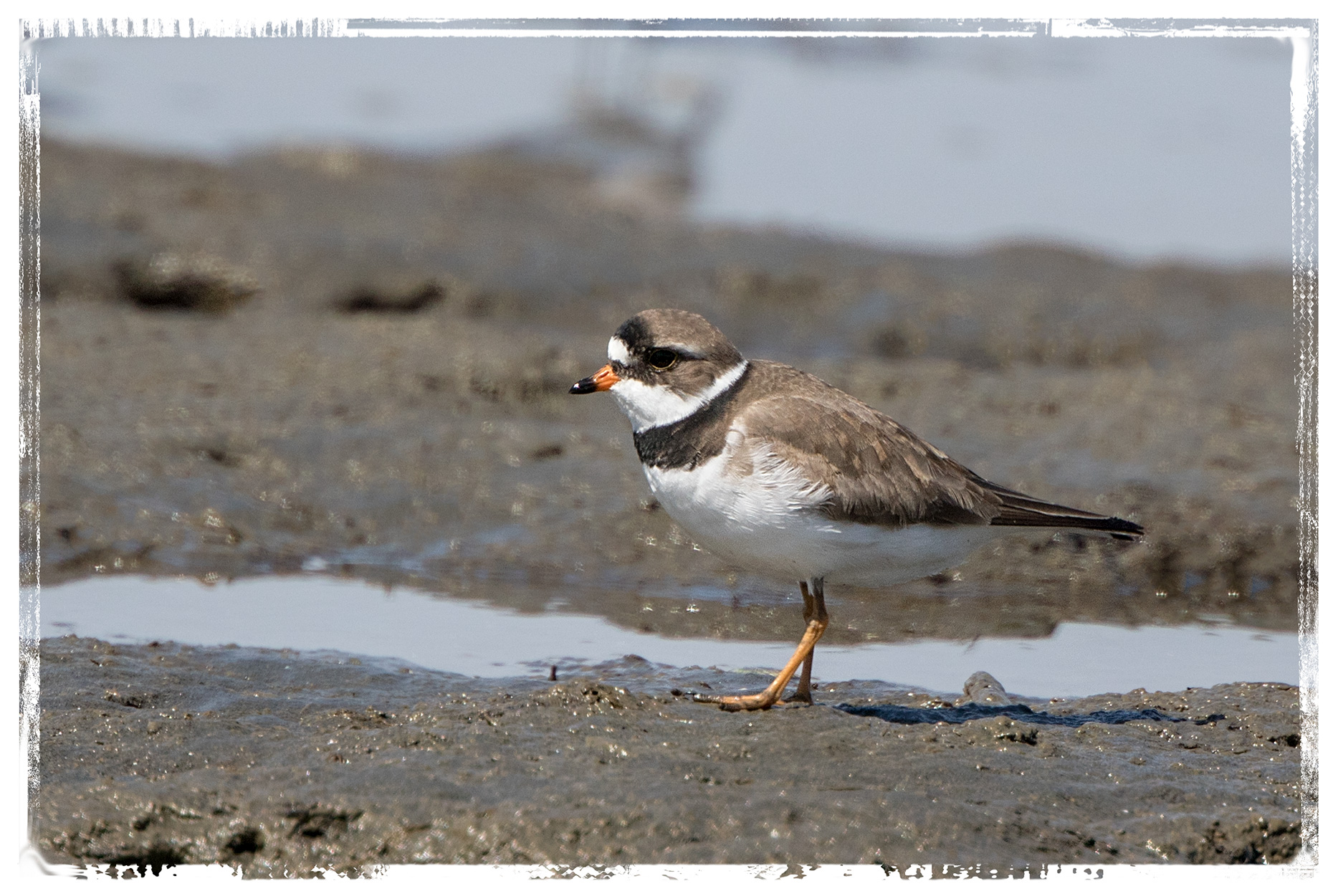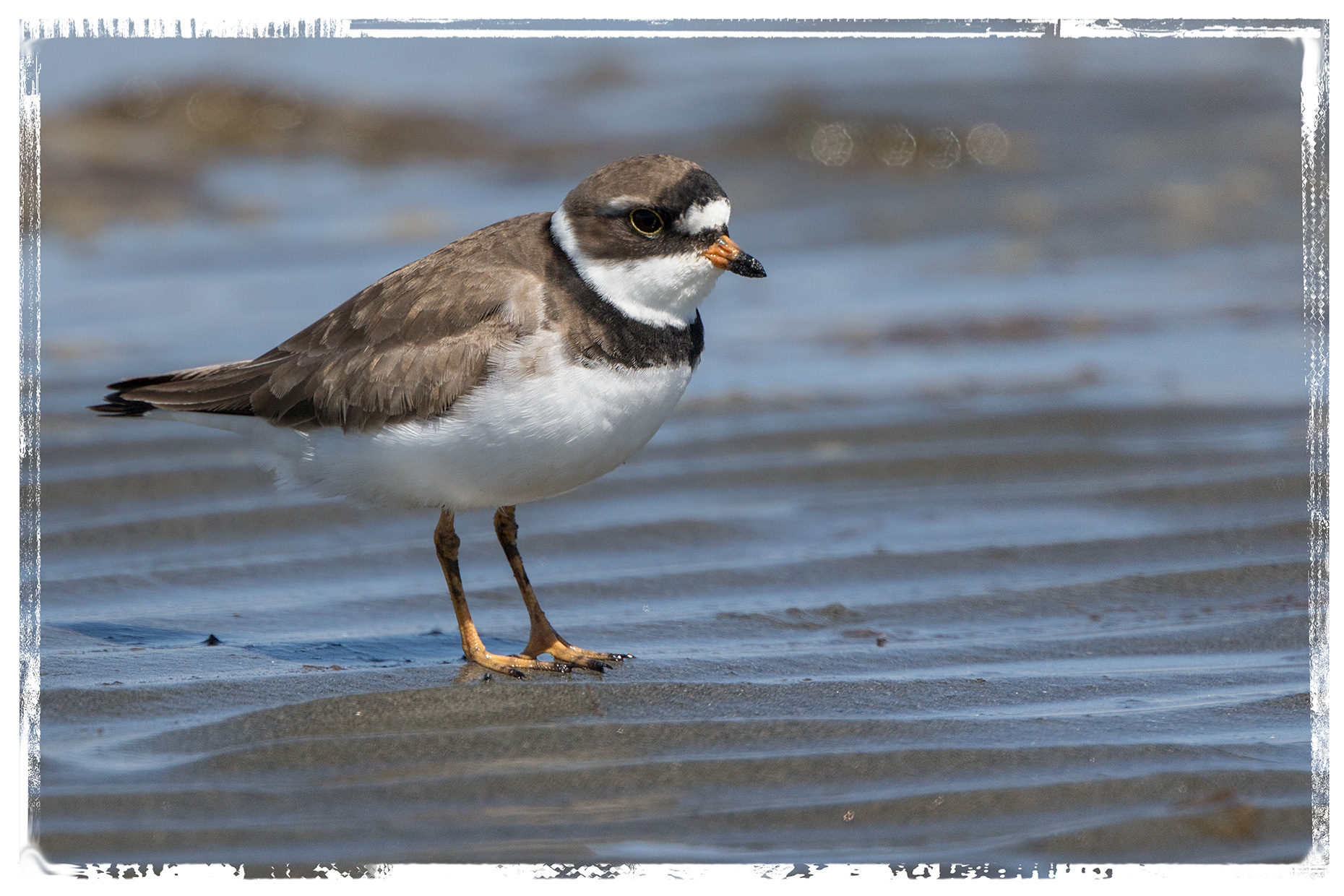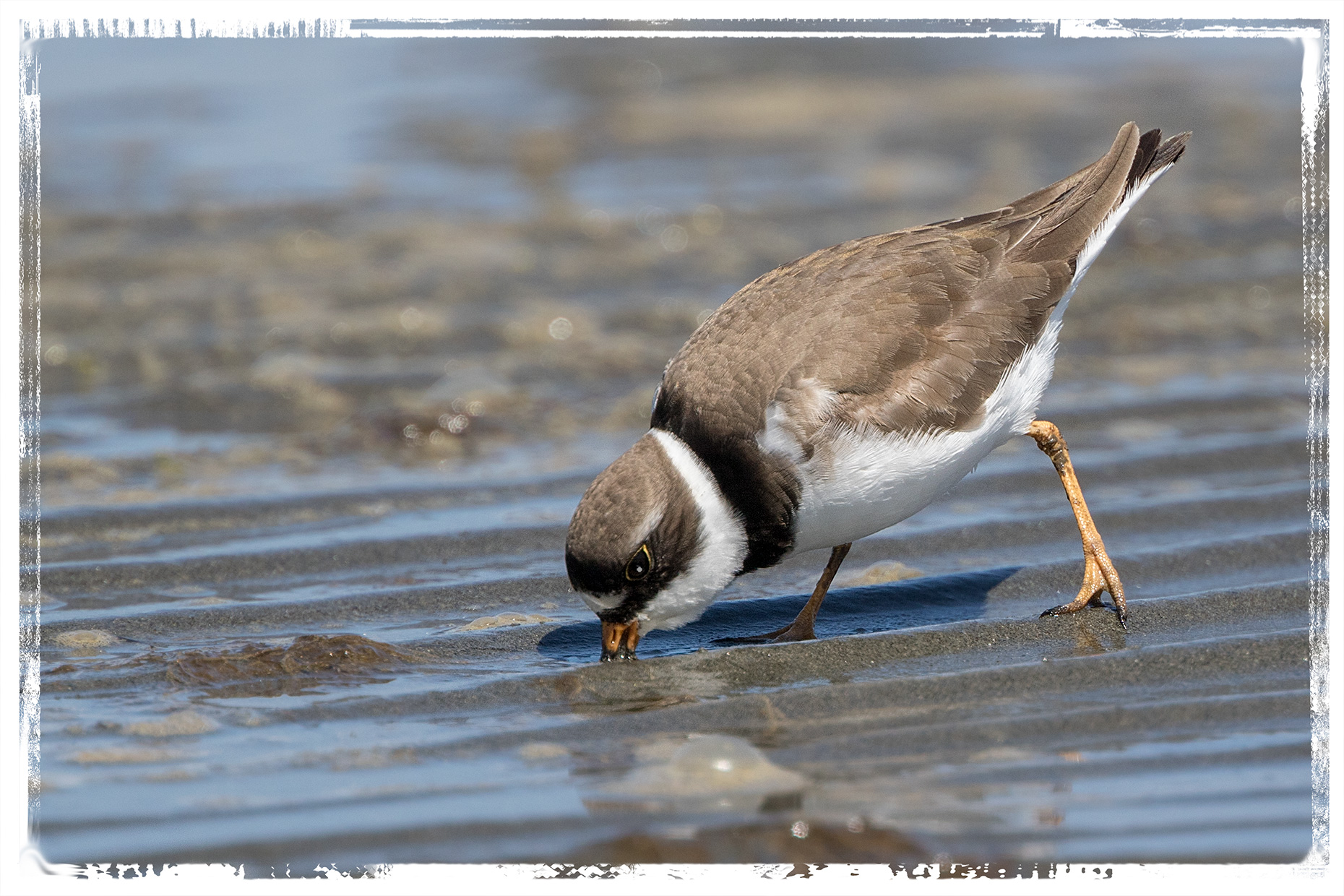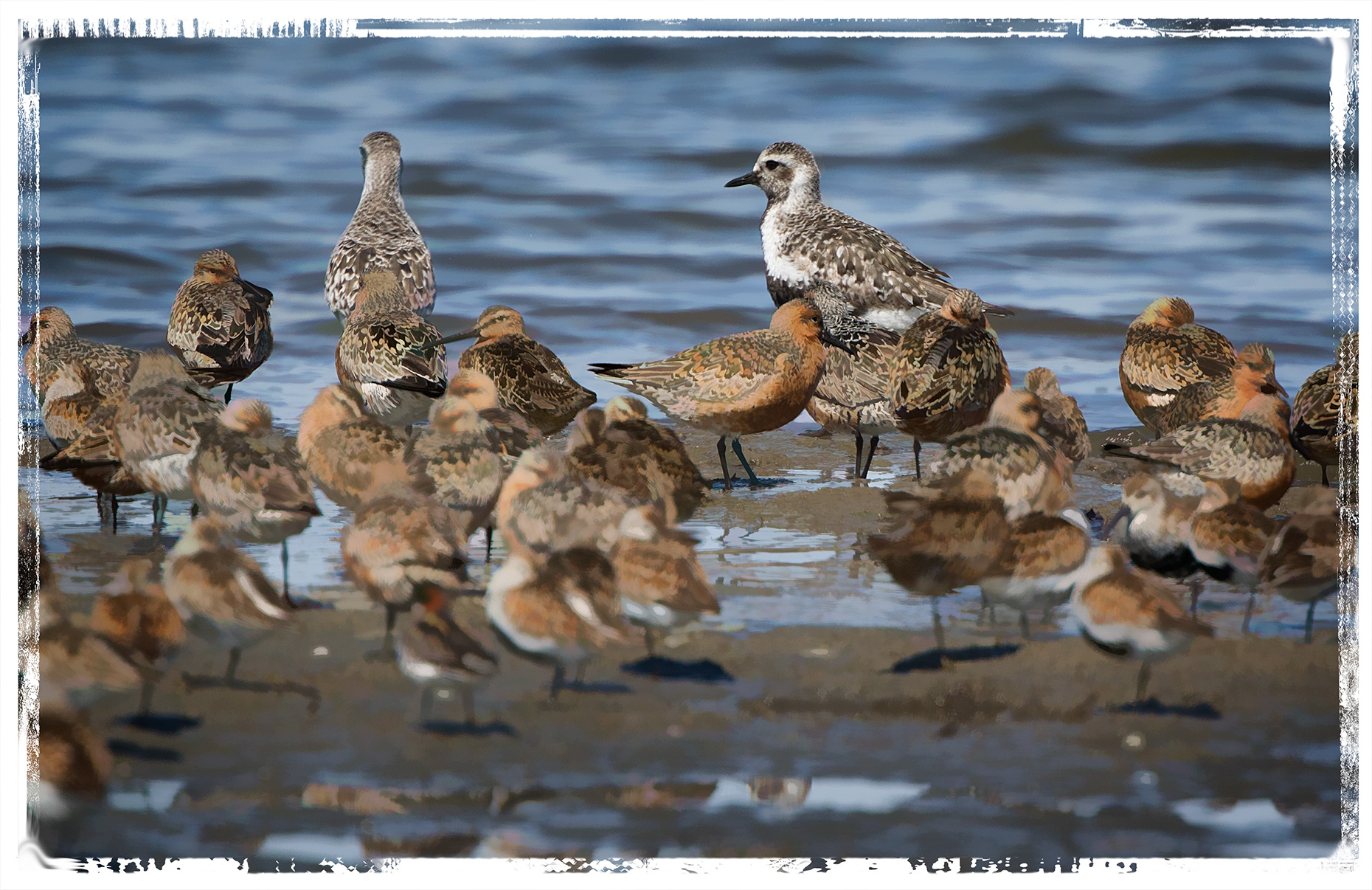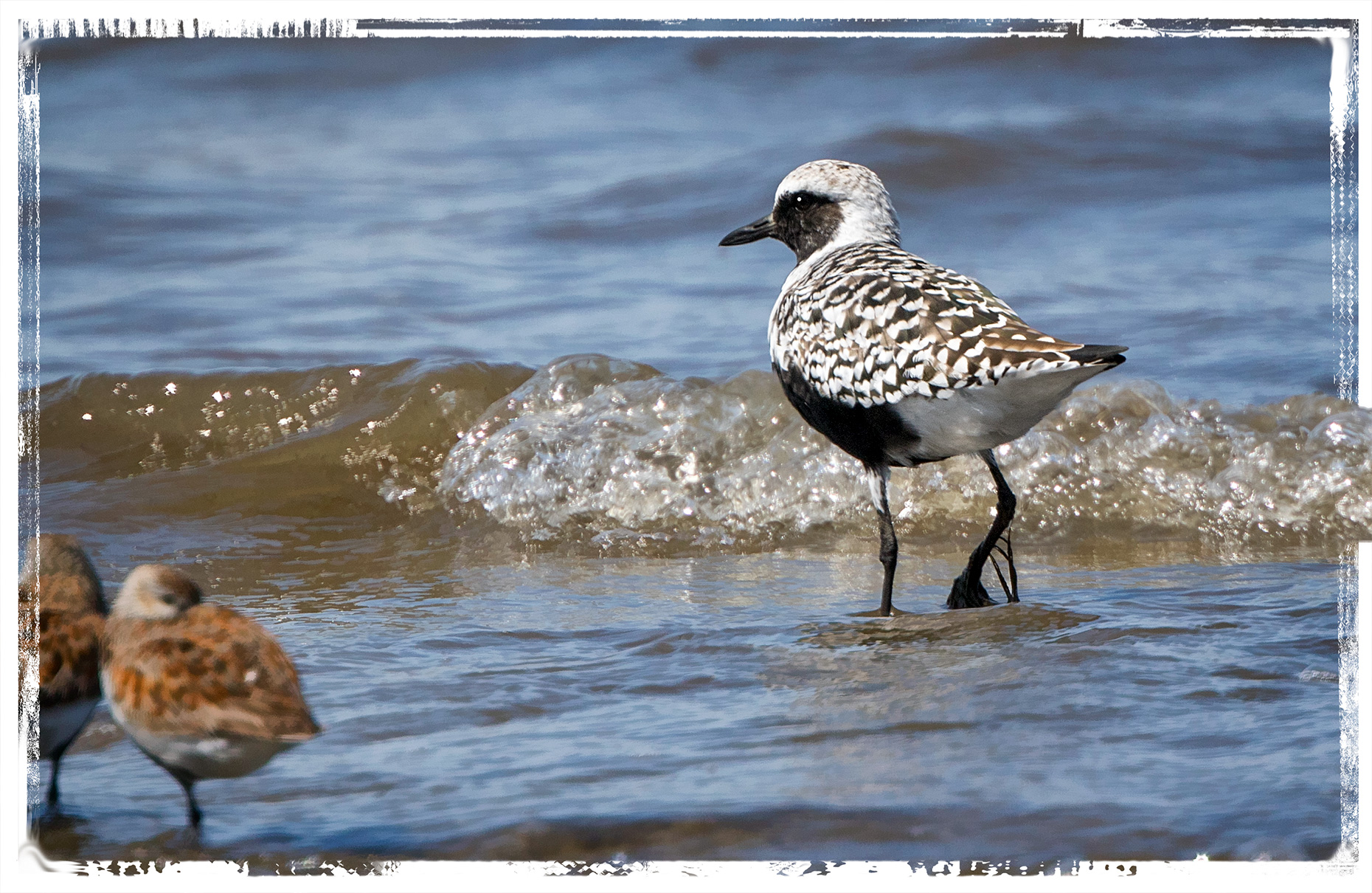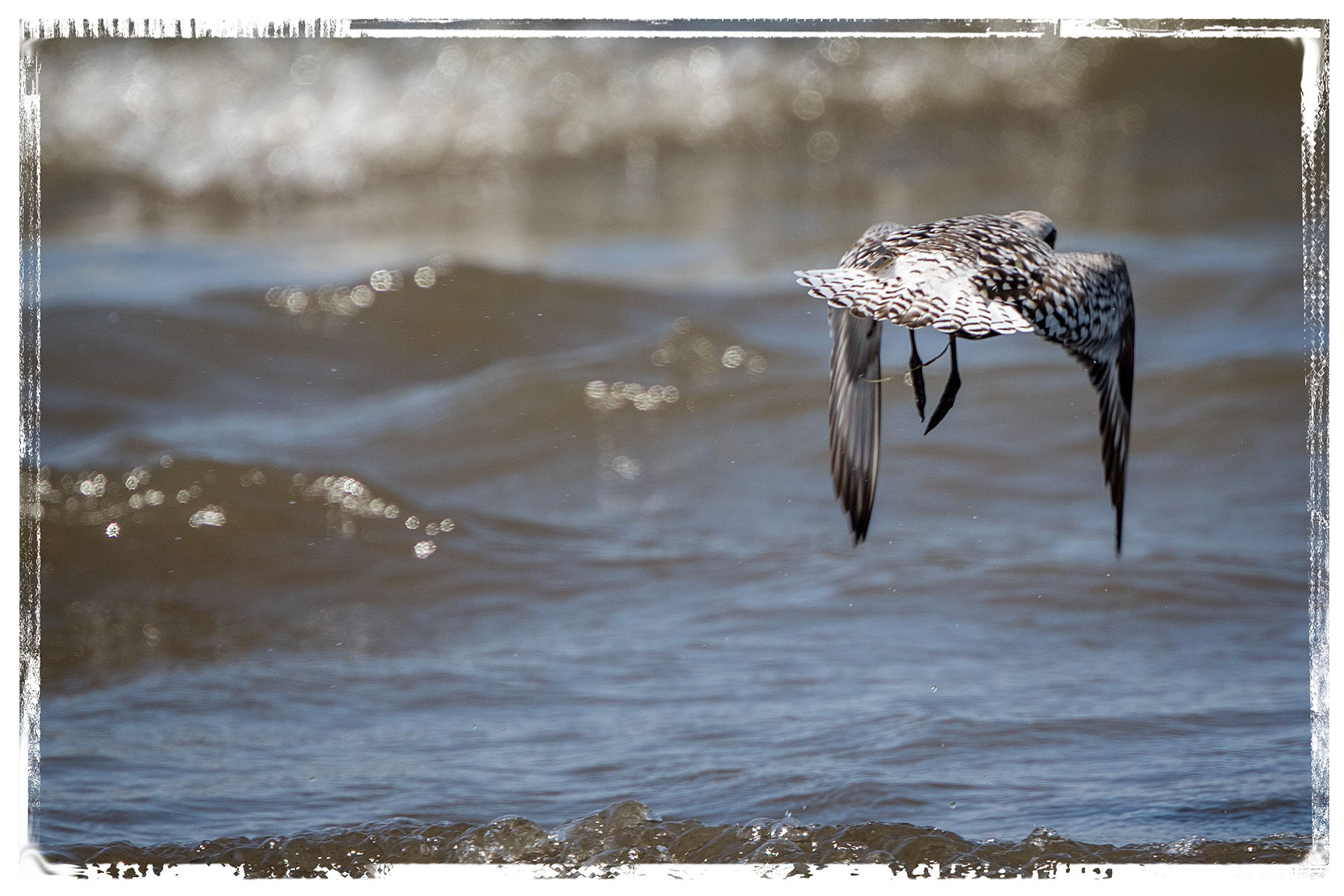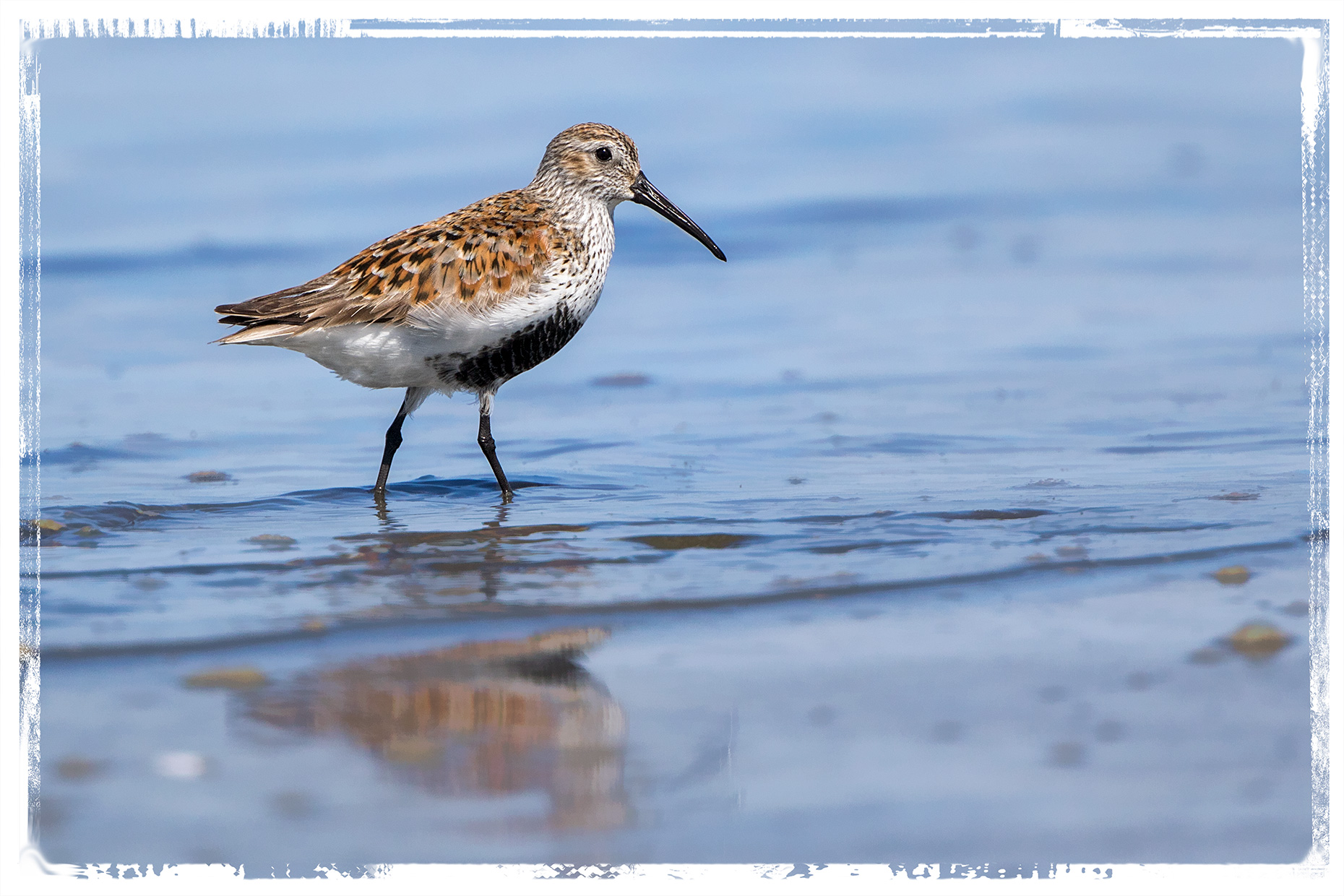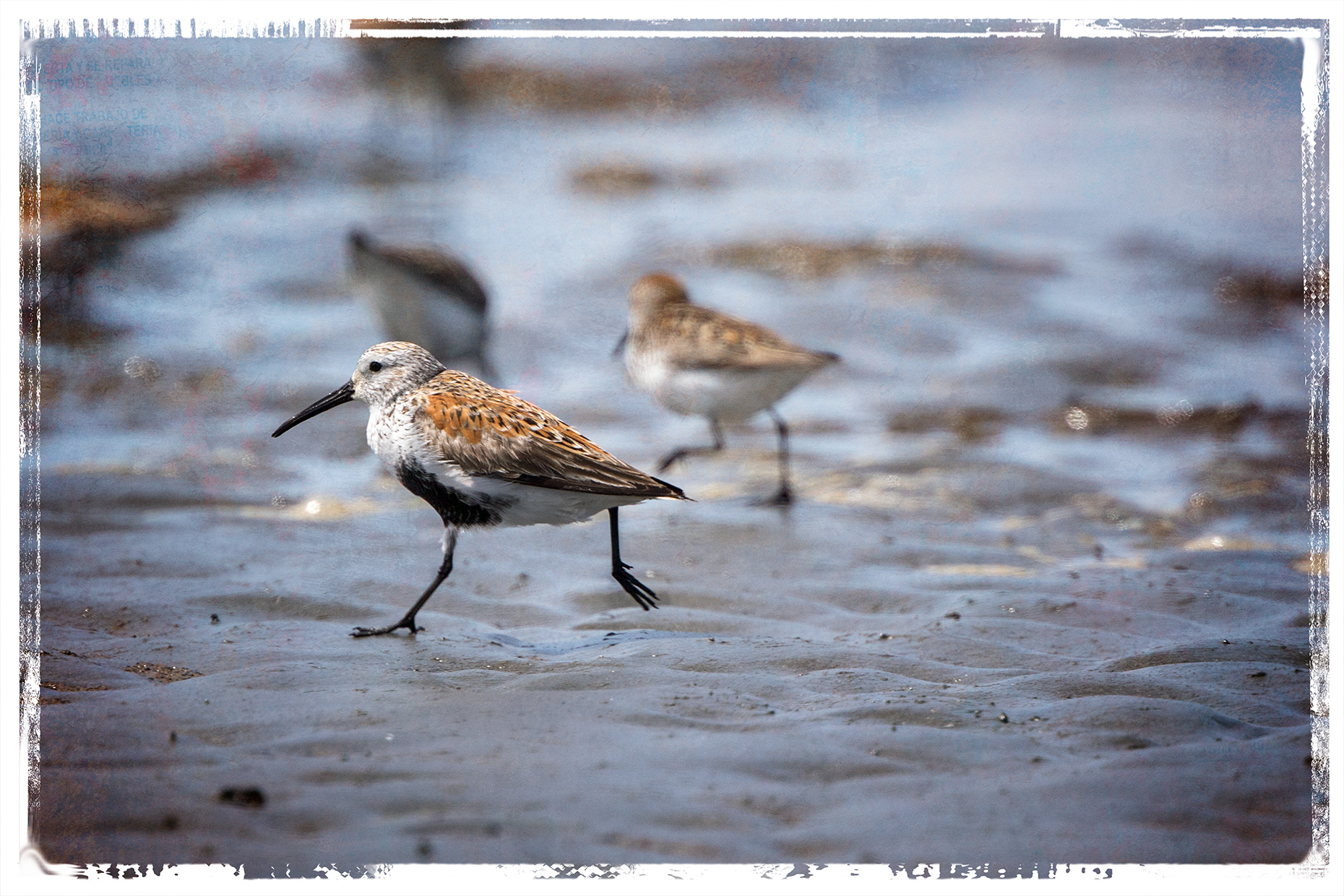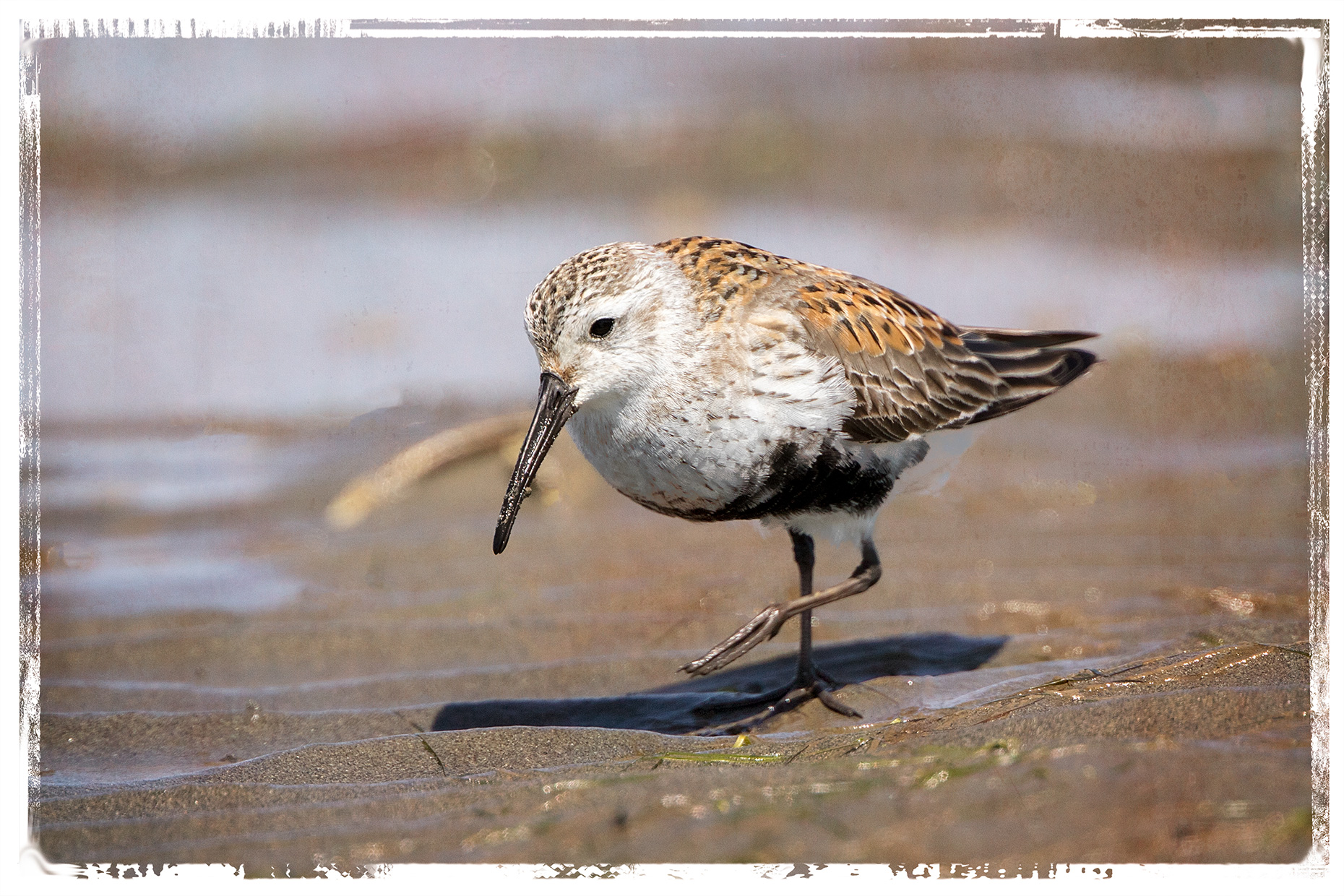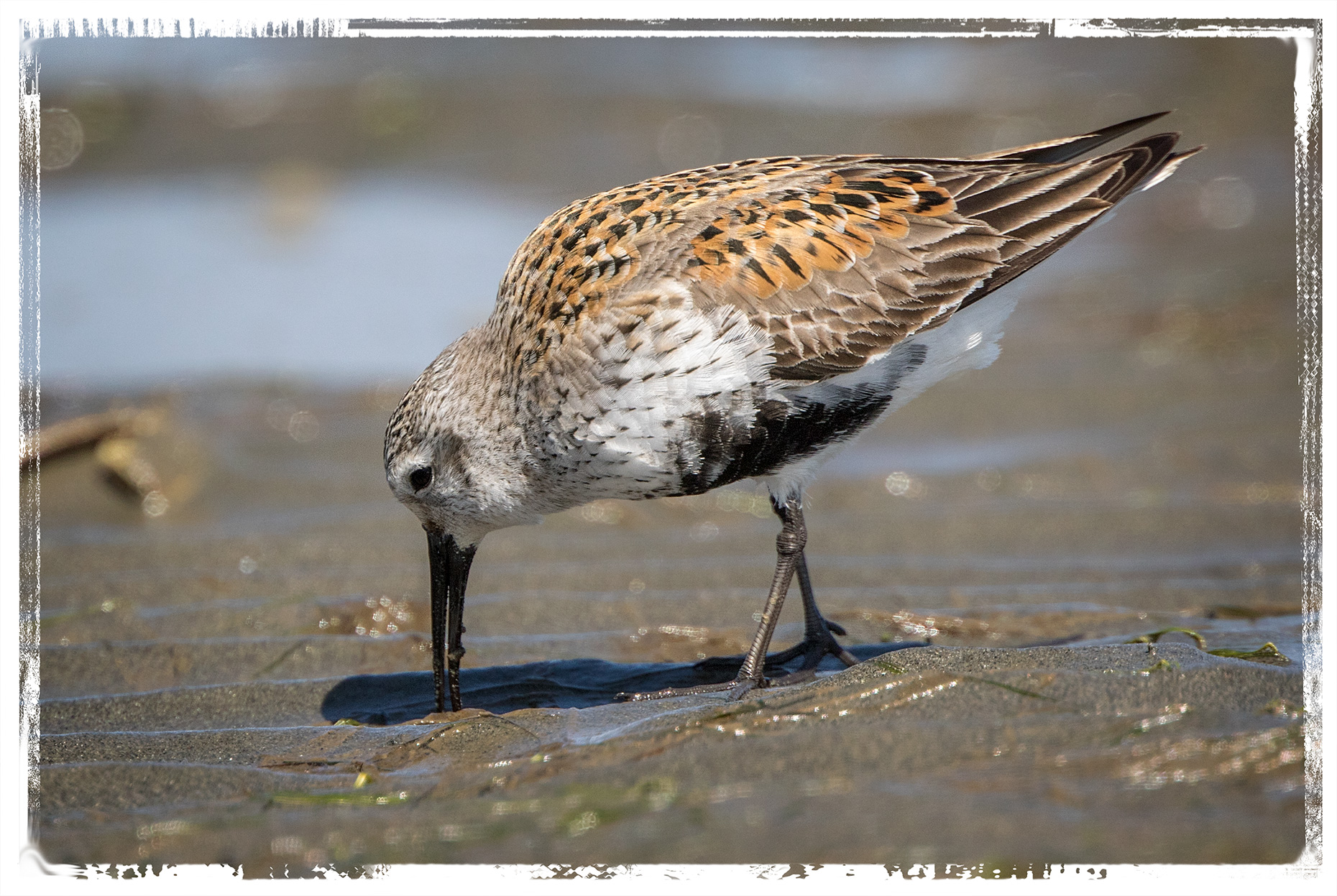It might say something about how bad of a “Birder” I am that it never occurred to me to check what birds were being seen at Bottle Beach before I went there. But, as I’ve said before, I go to magical places that draw me, not to see specific birds. As a result, I didn’t know that endangered Red Knots had been seen in the area and that birders were especially on the lookout for them.
In fact, I didn’t learn that until the second day when an excited birder with a scope reported that he had counted over 300 Red Knots on the shore. Although I had focused on the Ruddy Turnstones and Dunlin, I had mentioned to Leslie the first day that some of the birds sure looked like Red Knots, not Dowitcher’s in breeding plumage, though they are similar in size and some Dowitchers are nearly as bright as Red Knots.
As it turned out, when I got home and looked at my shots, I had taken lots of shots of Red Knots
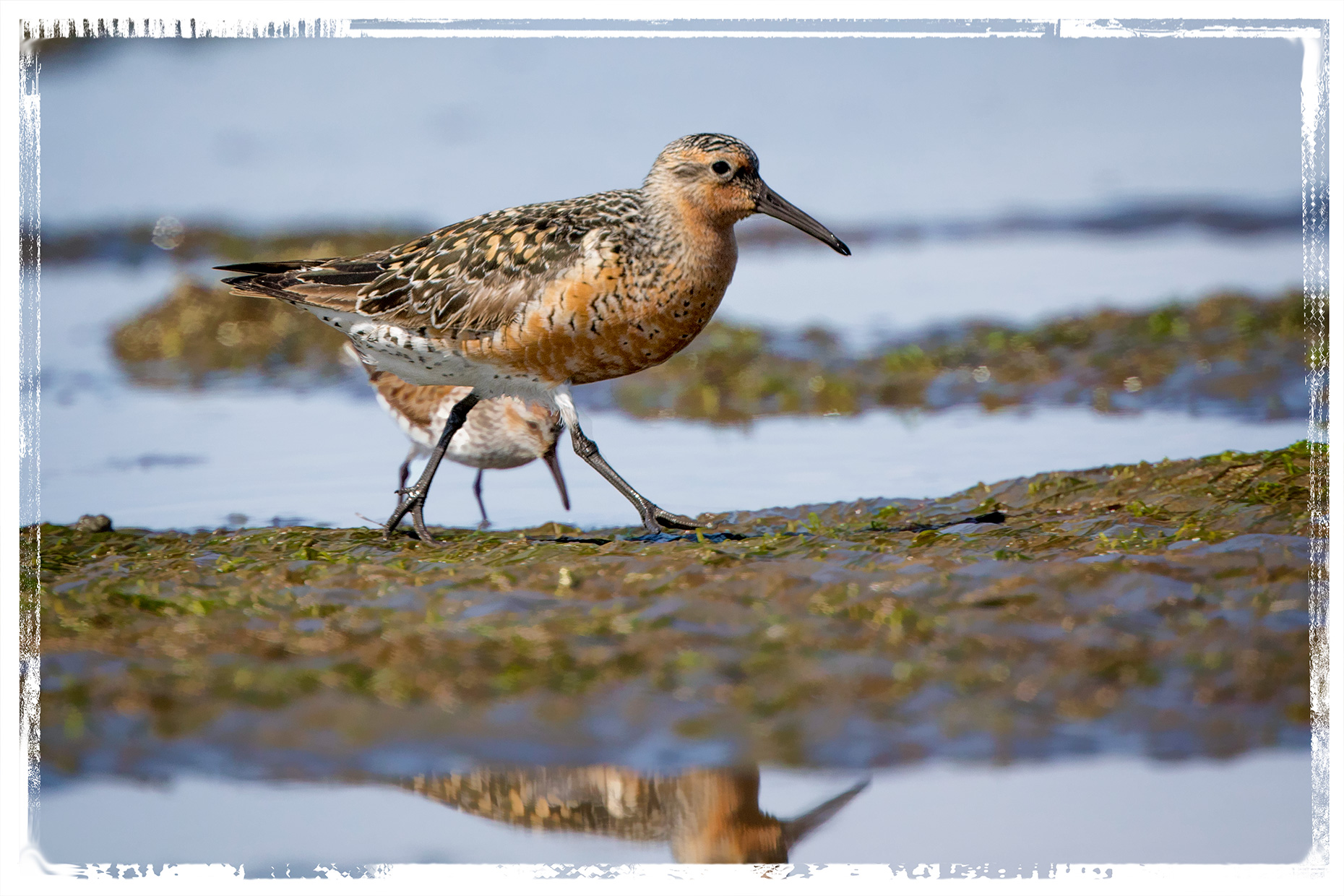
on the first day simply because they are a beautiful bird, and big enough that they’re impossible to ignore in a flock of shorebirds.
Dunlins are larger than most sandpipers, and this Red Knot is nearly twice the size of the resting Dunlin.
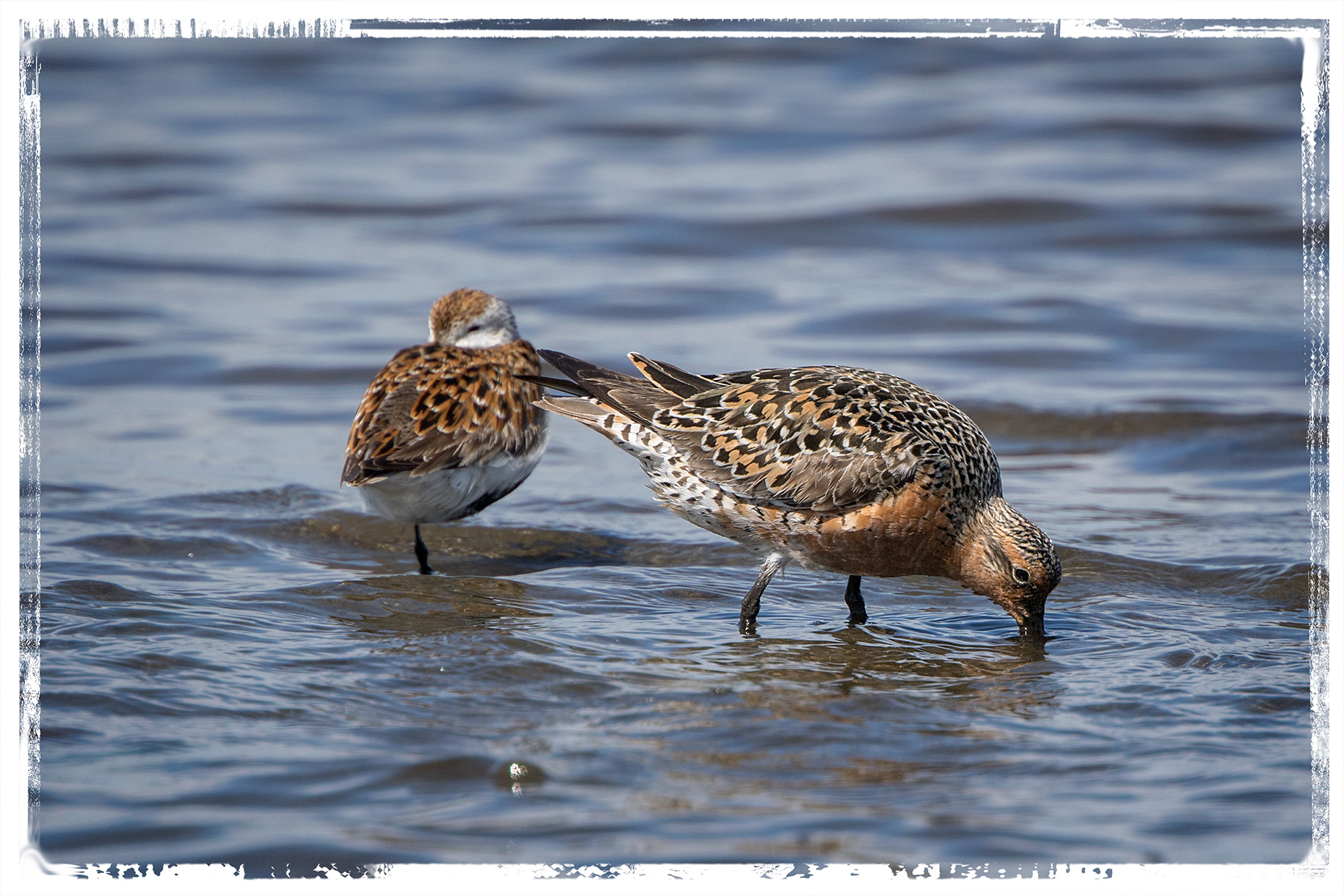
Not to mention that Red Knots are quite striking in flight and seem to fly a lot even while feeding.
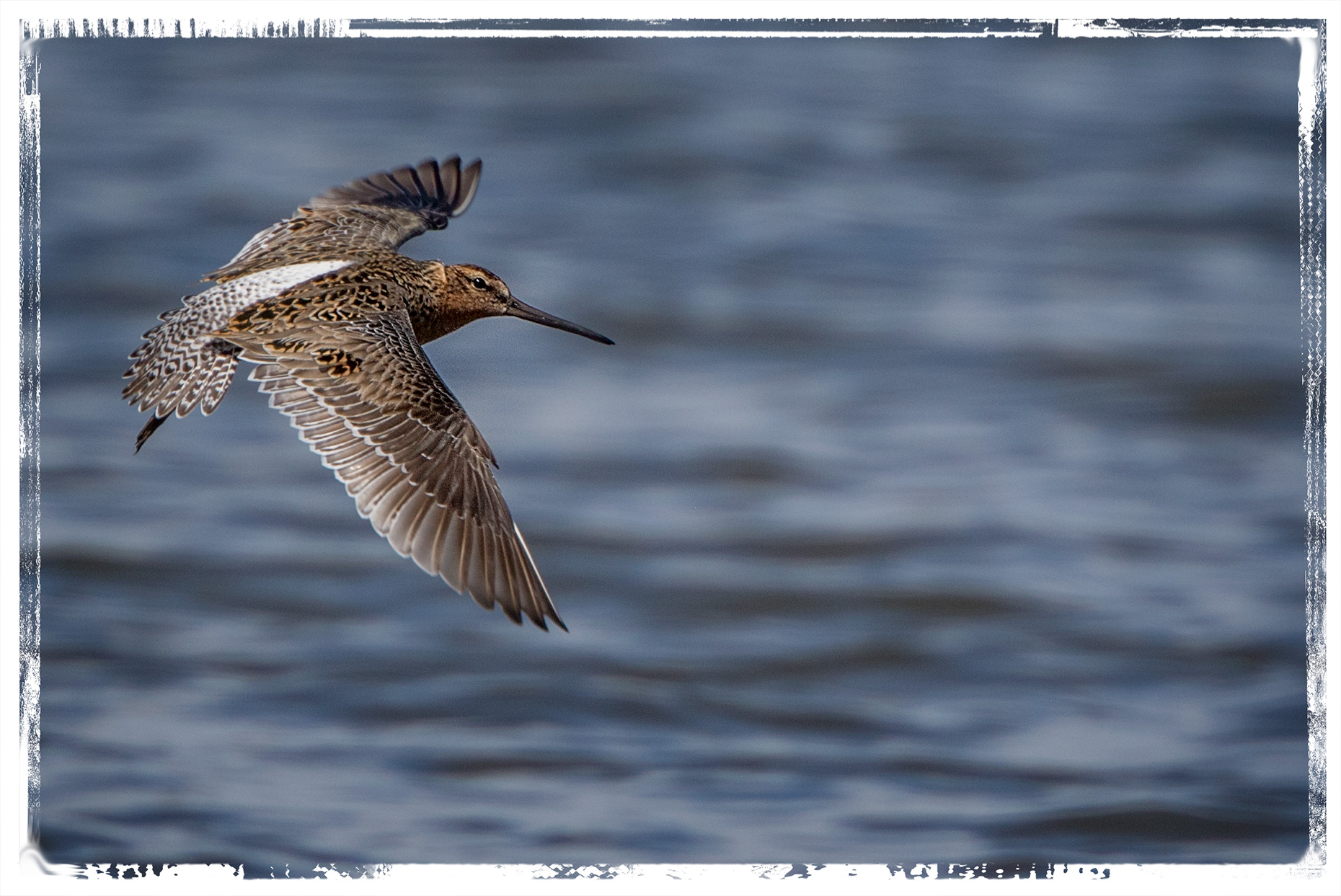
Most of all, though, it was their beautiful color, especially when the sun was behind me that produced shots like this
[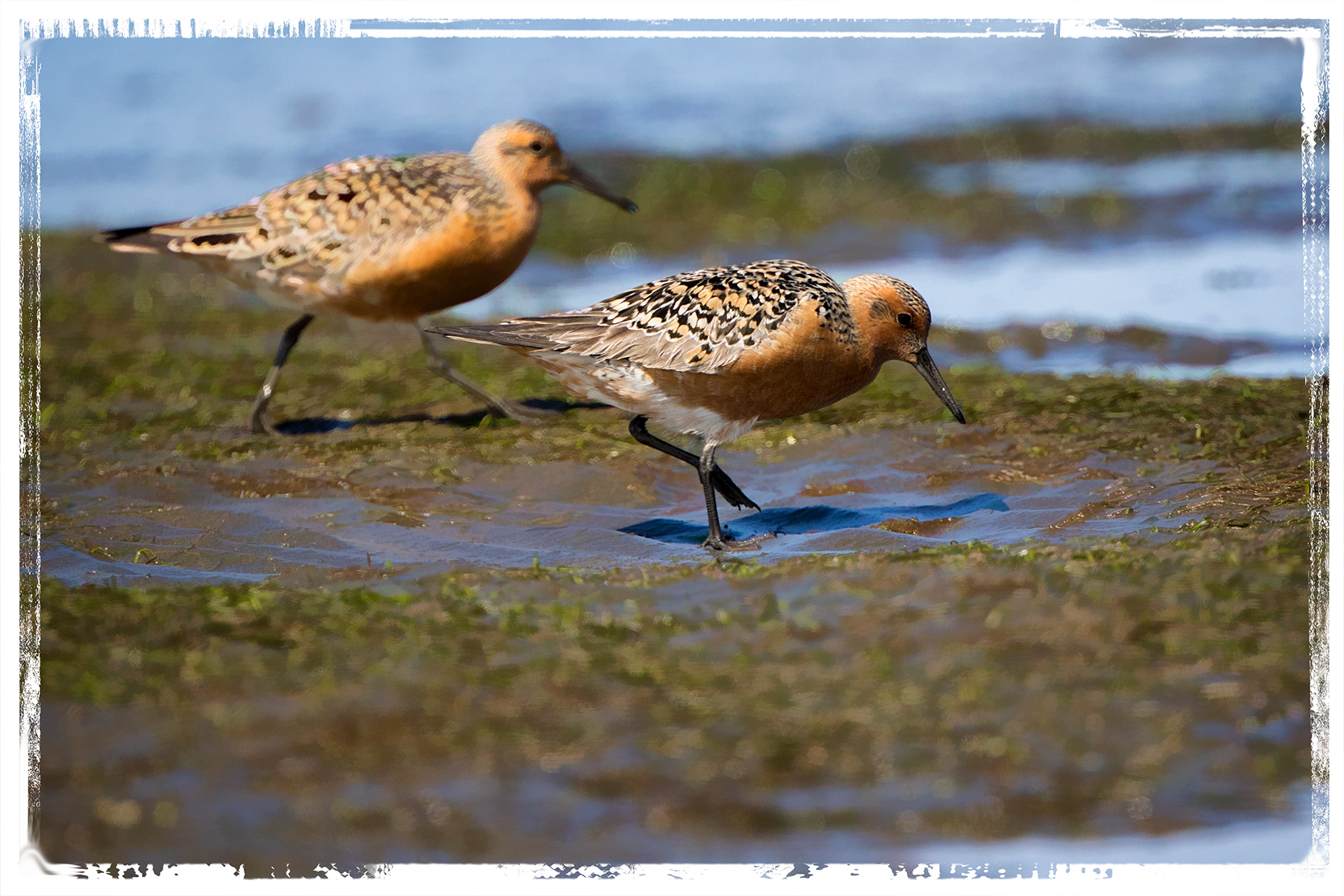
and this.
